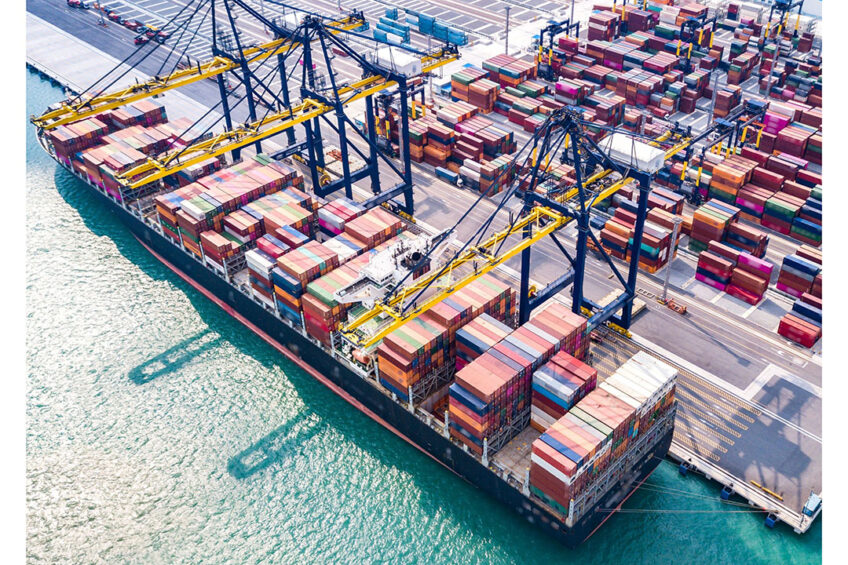Russian dairy industry challenges European exports

Russia is pumping billions from the state treasury into efforts to become one of the world’s largest dairy exporters and to take over a share of European suppliers and businesses in emerging markets in Asia, the Middle East and Africa.
The Russian dairy industry is switching from an import-replacement to an export-oriented development model, Maria Zhebit, spokesperson for Soyuzmoloko, the national dairy producers union in Russia, stated.
Since 2014, when Russian president Vladimir Putin imposed a food embargo that stopped virtually all Western foods from the market, dairy companies have been putting a lot of effort into filling the gaps.
However, in early 2023 a slump in dairy consumption provoked an unprecedented oversupply crisis. Russian dairy companies found themselves overstocked with cheese, milk whey and several other products.
To deal with the market turbulence, the Russian government has introduced a 100% subsidy on logistics costs associated with delivering dairy products to foreign customers. The measure will come into force on 1 January 2024, when dairy companies can seek compensation for the costs incurred in the fourth quarter of 2023.
The new subsidy is seen by many as a game changer for the Russian dairy export industry. “Many companies are actively working on establishing exports to foreign markets previously closed for Russia. These are not only our traditional partners in the [Commonwealth of Independent States] CIS region but also countries of Africa, the Middle East and Asia,” Zhebit disclosed.
European dairy
The main issue in Russian dairy exports has been expensive logistics, Zhebit claimed, expressing confidence that the subsidies would make a difference.
Russian dairy exporters have logistics costs that are twice those of their European competitors, estimated Anatoly Losev, general director of Russian dairy processor GK Molvest. For example, when dealing with Russian dairy products, cargo carriers demand higher insurance payments, which makes delivery to markets like North Africa non-profitable, he added.
One of the factors that Russian companies expect will change this is an anticipated slump in EU dairy production and export. By 2030, the EU will experience a 15% decline in milk production, owing to the green agenda, Artem Belov, general director of Soyuzmoloko, stated, adding that the forecasts came from European dairy businesses. This trend is surprising, he said.
“Apparently, they [European dairy companies] won’t be able to compensate for the losses with intensive production methods. A lack of land and water resources – all these factors affect the European Union. Most likely, they will not be able to meet the demand of the growing [global] market,” Belov said.
For Russian dairy companies, this opens a window of opportunity, according to Belov. “I believe that the list of the world’s top 5 largest dairy exporters will be changing in the coming 10 years,” he claimed.
“Many countries will lower [dairy] production, owing to natural and climate reasons, while demand will be only growing. Russia has every chance to become a major exporter,” Alexey Gruzdev, general director of Moscow-based think tank Streda Consulting, said, echoing Belov’s statements.
Solid aid
The Russian government has already tried to spur dairy export with logistics subsidies, though these were limited to 25% in recent years. In 2022, Russian dairy exports totalled 800,000 tonnes, according to Soyuzmoloko, which is 20% lower than the previous year. In monetary terms, supplies stood at US$500 million.
The Russian budget will pay 11 billion roubles (US$135 million, based on the 2022 average exchange rate) as a logistics subsidy to all agricultural companies in 2023, the Russian Agricultural Ministry reported. Dairy businesses are expected to account for a large share of this amount.
Last year, roughly 95% of Russian dairy exports landed in the Customs Union countries, as supplies dropped, estimated Gruzdev. With countries like Kazakhstan, Kyrgyzstan and Armenia, Russian exporters have the benefit of common customs – logistics costs associated with delivering dairy products to these countries are substantially lower than shipping goods to Asia, the Middle East or Africa.
Due to this year’s Russian rouble devaluation, Russian dry milk products now appear to be highly competitive globally, Gruzdev stated. Still, extremely expensive logistics and insurance costs are eroding this advantage, he said, adding that the new subsidy should help with this issue. In general, Russia must brace to compete with dairy exporters from Latin America, New Zealand and the European Union, Gruzdev added.
Internal issues in dairy sector
To break out to foreign markets, Russian dairy businesses need 2 things: systemic state aid and affordable loans, Belov said. While things seem perfect with the former, the same can’t be said about the latter. “Recently, the key interest rate was below inflation, which let the industry develop,” Belov said.
However, it looks like the industry must prepare itself for expensive loans for the time being. In a bid to tame the rouble’s devaluation and inflation, the Russian Central Bank has pushed up the key interest rate from 8.5% to 15% in several rounds during the past few months.
The sharp rise in the interest rate directly impacts the Russian dairy industry. This will lower the investment inflow, said Losev, adding that the authorities also reduced the state subsidy of the interest rate for dairy businesses. For loans where the subsidies covered 100% of the interest rate, the level was reduced to 70%. If it was 70%, then the figure dropped to 50%, he added.
The recent rise in the key interest rate will make loans more expensive and, in fact, unaffordable for dairy companies, Sergey Bluma, general director of the Russian dairy company Agrosila, said.
The rise in the key interest rate is not the only factor hurting the Russian dairy industry and undermining its development opportunities, including in foreign markets. Over the past year, Russian dairy companies have complained about a lack of personnel and, consequently, rising labour costs, as well as multiple problems associated with sanction risks.
In addition, Russian dairy companies still depend strongly on imported milk starter cultures, some of which still come from Europe.










